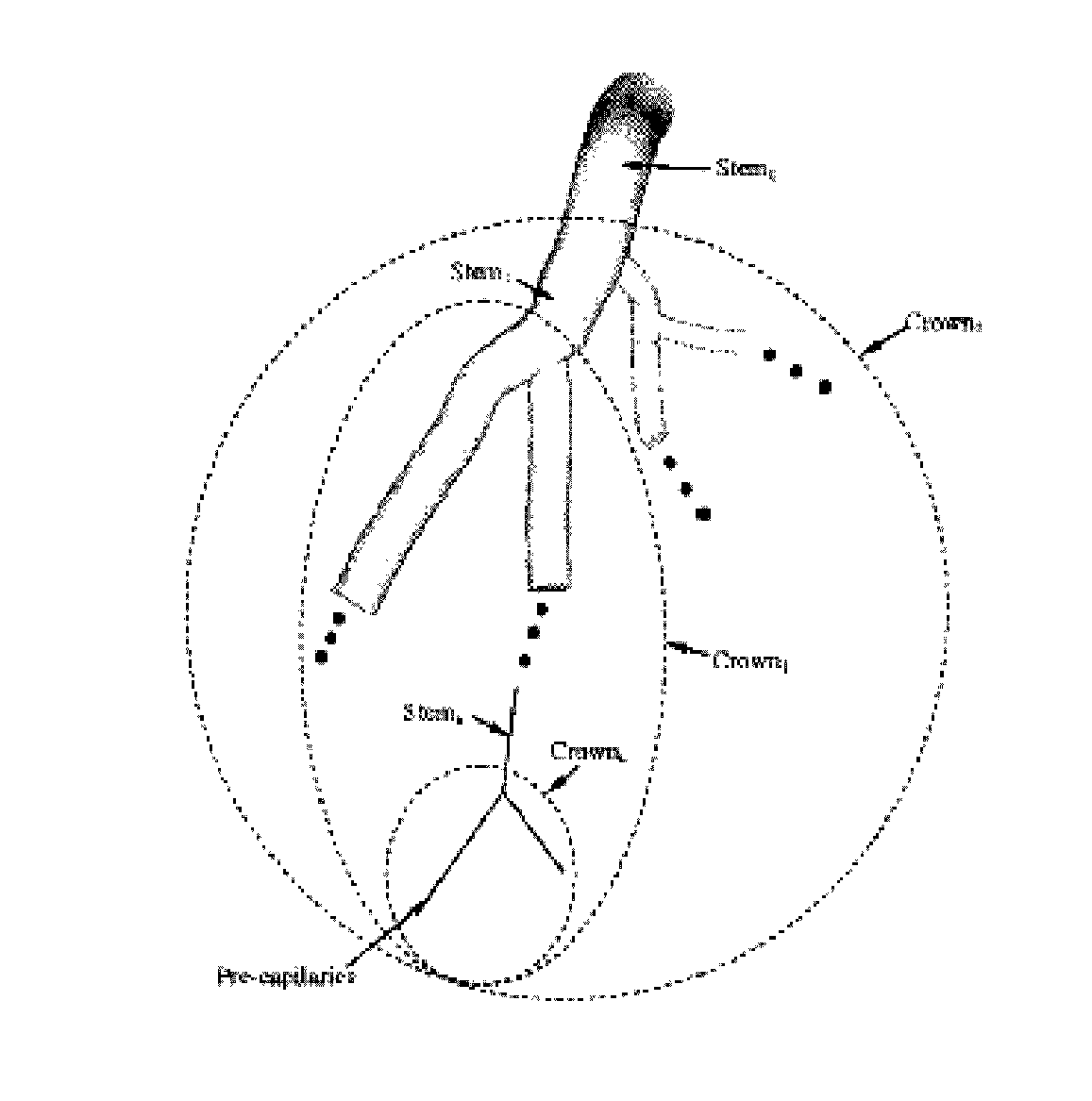Methods for the noninvasive determination of perfusion, blood flow, and capillarity
a non-invasive, blood flow technology, applied in the direction of angiography, instruments, image enhancement, etc., can solve the problems of ischemia, cell death, cell death, organ or tissue function loss,
- Summary
- Abstract
- Description
- Claims
- Application Information
AI Technical Summary
Benefits of technology
Problems solved by technology
Method used
Image
Examples
Embodiment Construction
[0024]The disclosure of the present application provides a framework for an analytical determination of blood flow or perfusion (volumetric blood flow per unit of mass of tissue) from the number of capillaries in a vascular network of a biopsy specimen. Perhaps more specifically, the present disclosure provides novel scaling laws related to the form-function relationship between the number of capillaries in a vascular network and the blood flow that perfuses such network. Such scaling laws are inter-specific (i.e. across various species including rats, cats, rabbits, pigs, hamsters, and humans), and were validated in intra-specific vascular trees (e.g., coronary, pulmonary, mesenteric vessels, skeletal muscle vasculature, and conjunctiva vessels) for which there exists morphometric data, thus demonstrating their accuracy and ease of use. Additionally, the present scaling laws are further supported by nature's proportionality law between the flow needed to nourish an organ and the nu...
PUM
 Login to View More
Login to View More Abstract
Description
Claims
Application Information
 Login to View More
Login to View More - R&D
- Intellectual Property
- Life Sciences
- Materials
- Tech Scout
- Unparalleled Data Quality
- Higher Quality Content
- 60% Fewer Hallucinations
Browse by: Latest US Patents, China's latest patents, Technical Efficacy Thesaurus, Application Domain, Technology Topic, Popular Technical Reports.
© 2025 PatSnap. All rights reserved.Legal|Privacy policy|Modern Slavery Act Transparency Statement|Sitemap|About US| Contact US: help@patsnap.com



